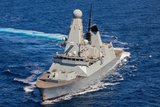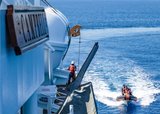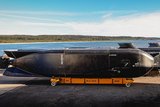Drills reflect Iranian emphasis on unmanned and anti-ship capabilities
As the dust settles from the Zolfaghar-99 large-scale military exercise, which took place from 10-12 September around the Strait of Hormuz, it is possible to draw some conclusions about the capabilities of the Iranian defence industrial base.
The exercise involved all four branches of the Islamic Republic of Iran Army (ground forces, air defence forces, the navy and the air force) but it is worth paying particular attention to the demonstration of UAV capabilities.
Footage of a Simorgh MALE-class UAV hitting a sea target with a Sadid-345 guided bomb was very significant. Before the UAV successfully attacked the target, it
Already have an account? Log in
Want to keep reading this article?
More from Naval Warfare
-
![US Coast Guard prepares procurement of next-gen surface search radar]()
US Coast Guard prepares procurement of next-gen surface search radar
The NXSSR will replace five in-service capabilities and be the US Coast Guard’s primary collision avoidance system.
-
![MBDA-led DragonFire’s latest trials move the LDEW system closer to UK Navy integration]()
MBDA-led DragonFire’s latest trials move the LDEW system closer to UK Navy integration
The DragonFire lines up with other European laser-directed energy weapons being developed in collaboration with MBDA.
-
![US Coast Guard pursues solutions to increase maritime domain dominance]()
US Coast Guard pursues solutions to increase maritime domain dominance
The USCG is seeking technologies, services and applications to better connect its assets and speed up the decision-making process.
-
![Canadian Coast Guard’s OOSV delivery is “major milestone” in fleet modernisation]()
Canadian Coast Guard’s OOSV delivery is “major milestone” in fleet modernisation
The Polar Class 6 platform is the largest CCG science-dedicated vessel and will operate on the country’s east coast.
-
![How the Anduril-HHI autonomous ship plan fits in with the US Navy’s MASC programme]()
How the Anduril-HHI autonomous ship plan fits in with the US Navy’s MASC programme
The new modular vessel is expected to be developed for both commercial and defence use, with a heavy focus on production speed and mission flexibility.






















